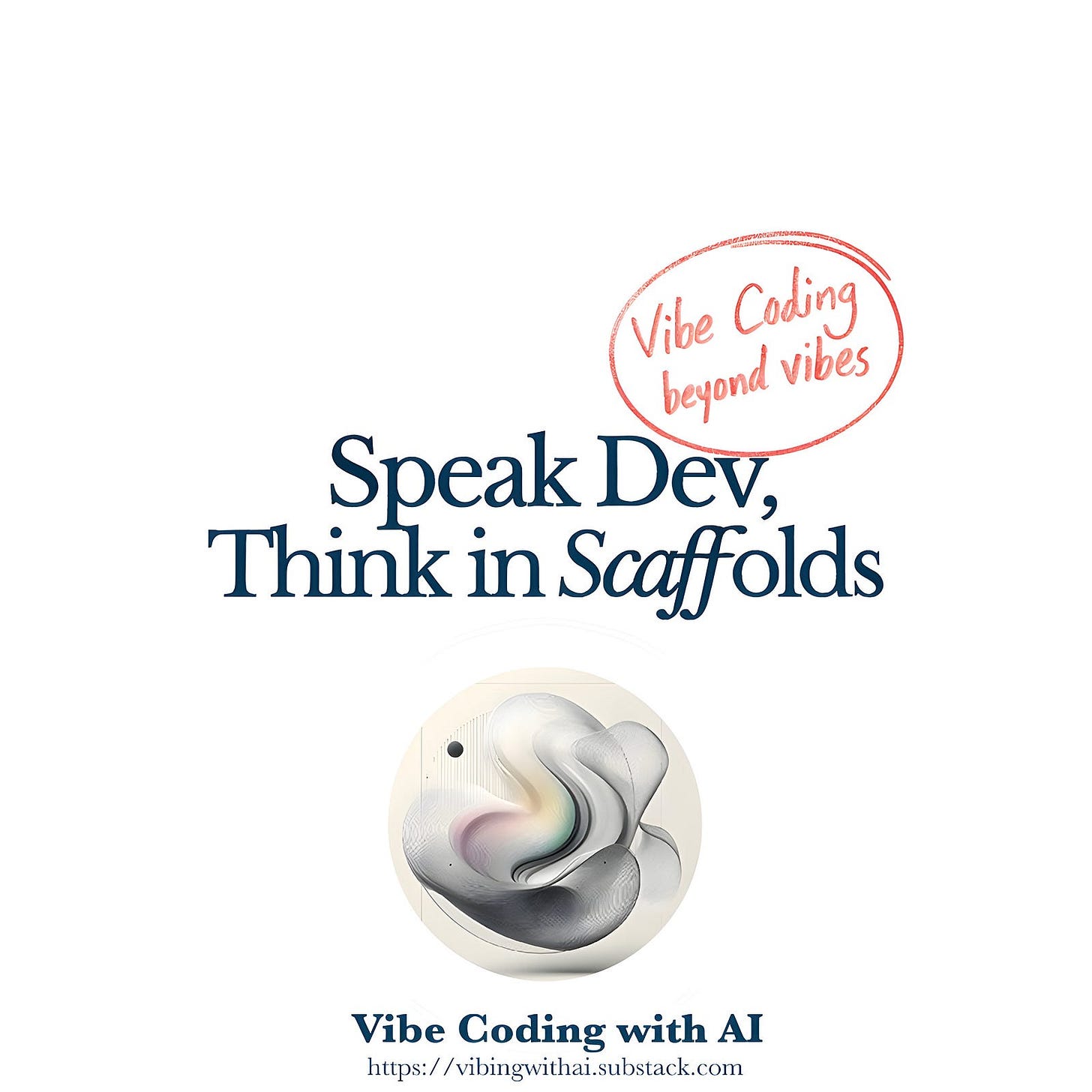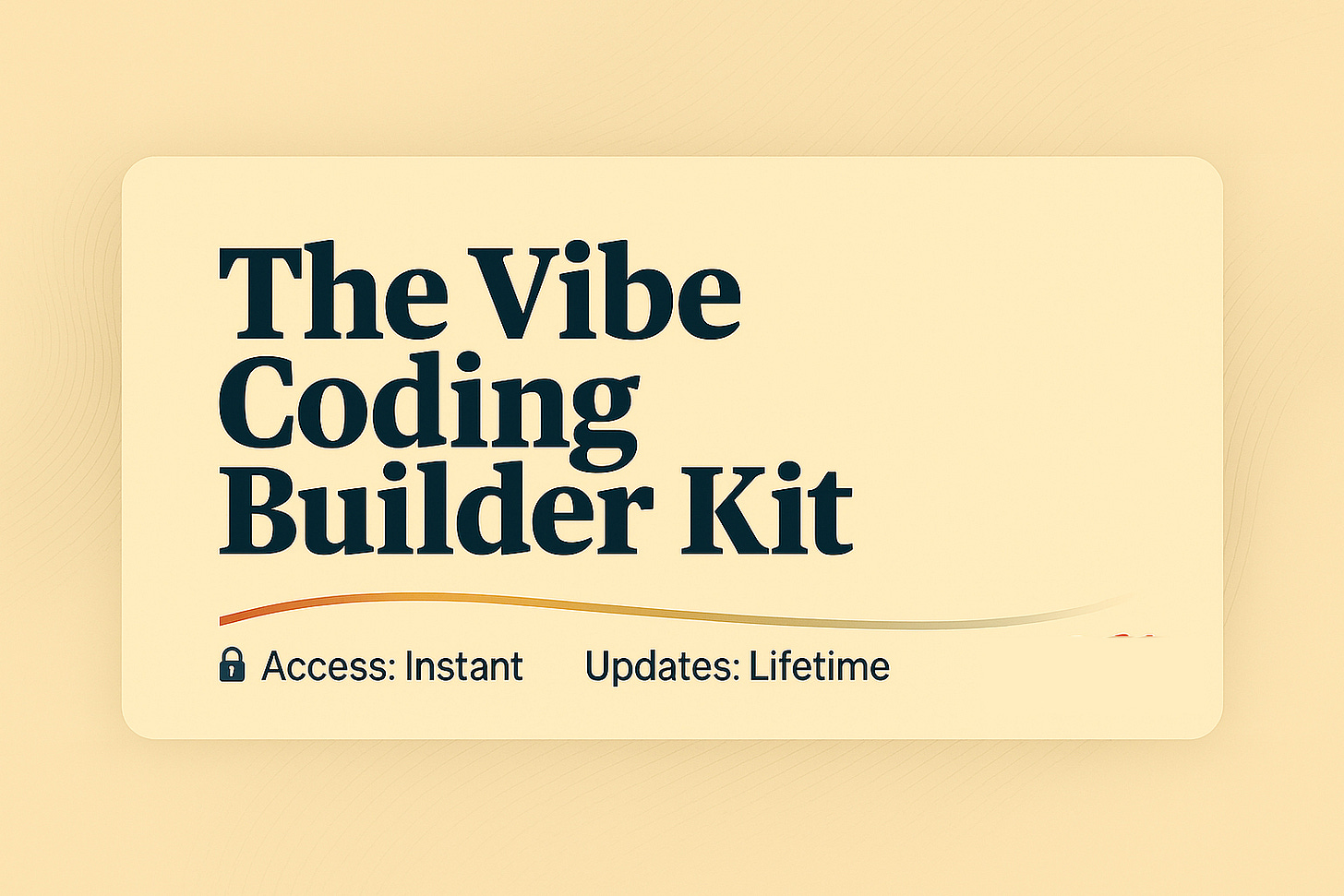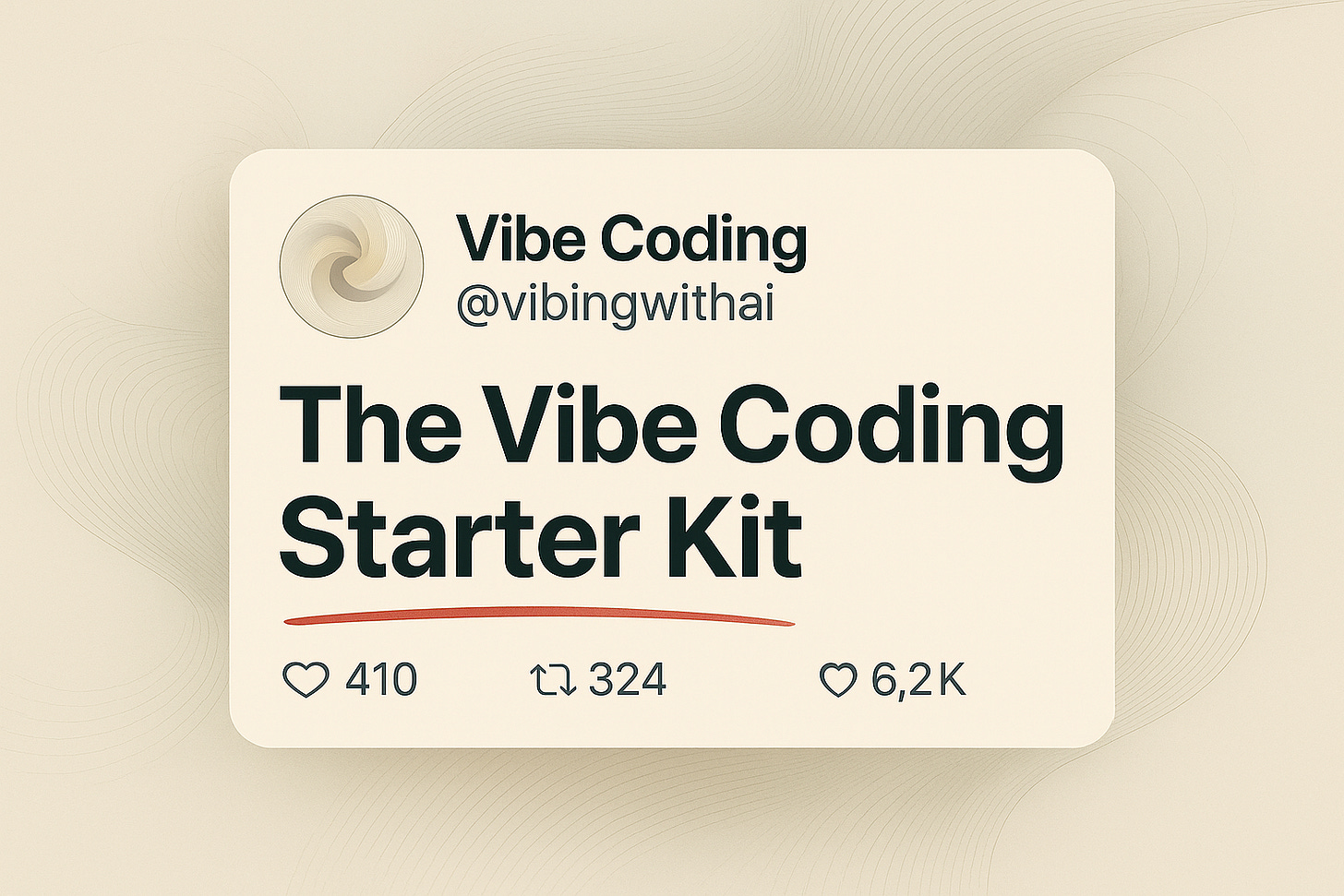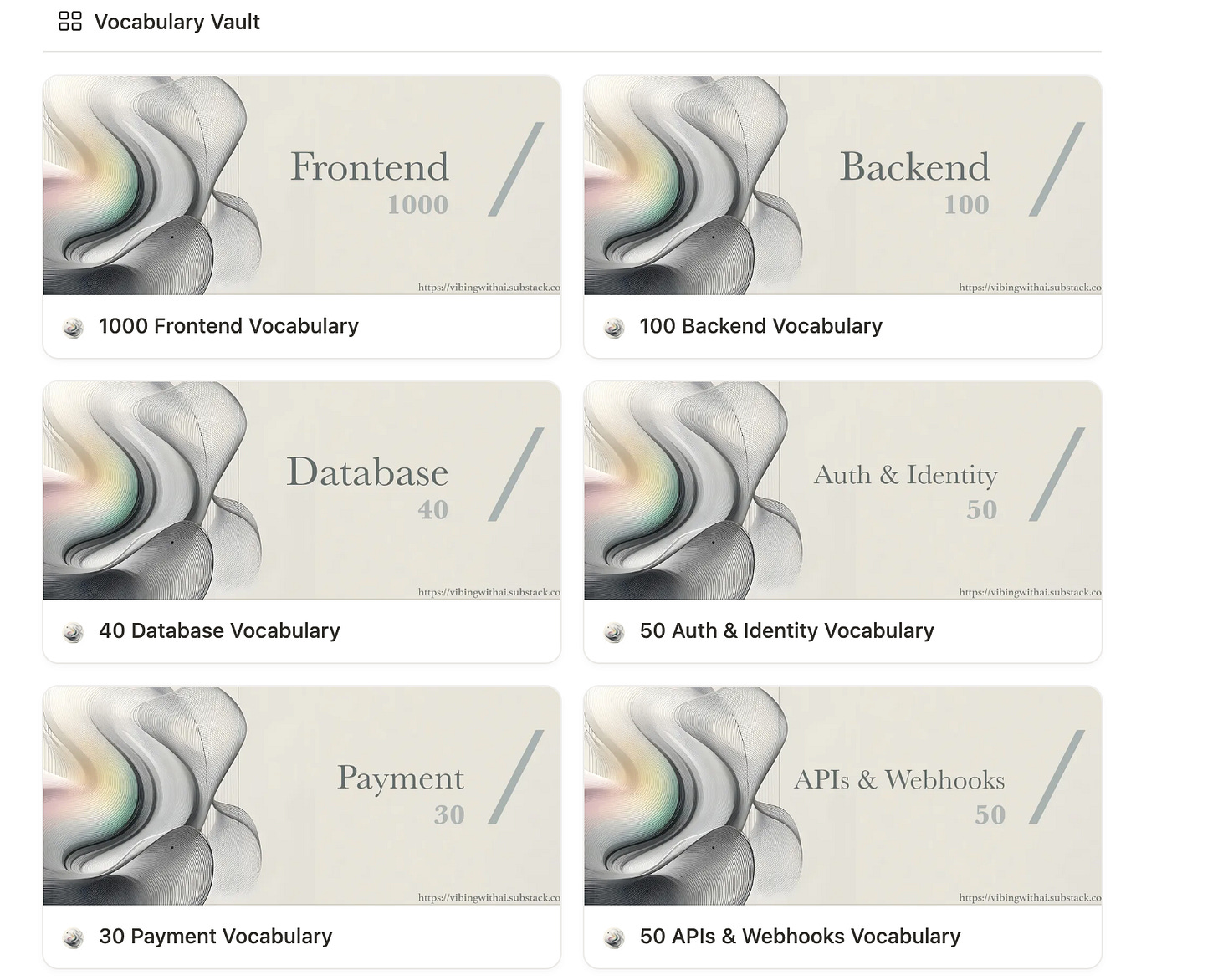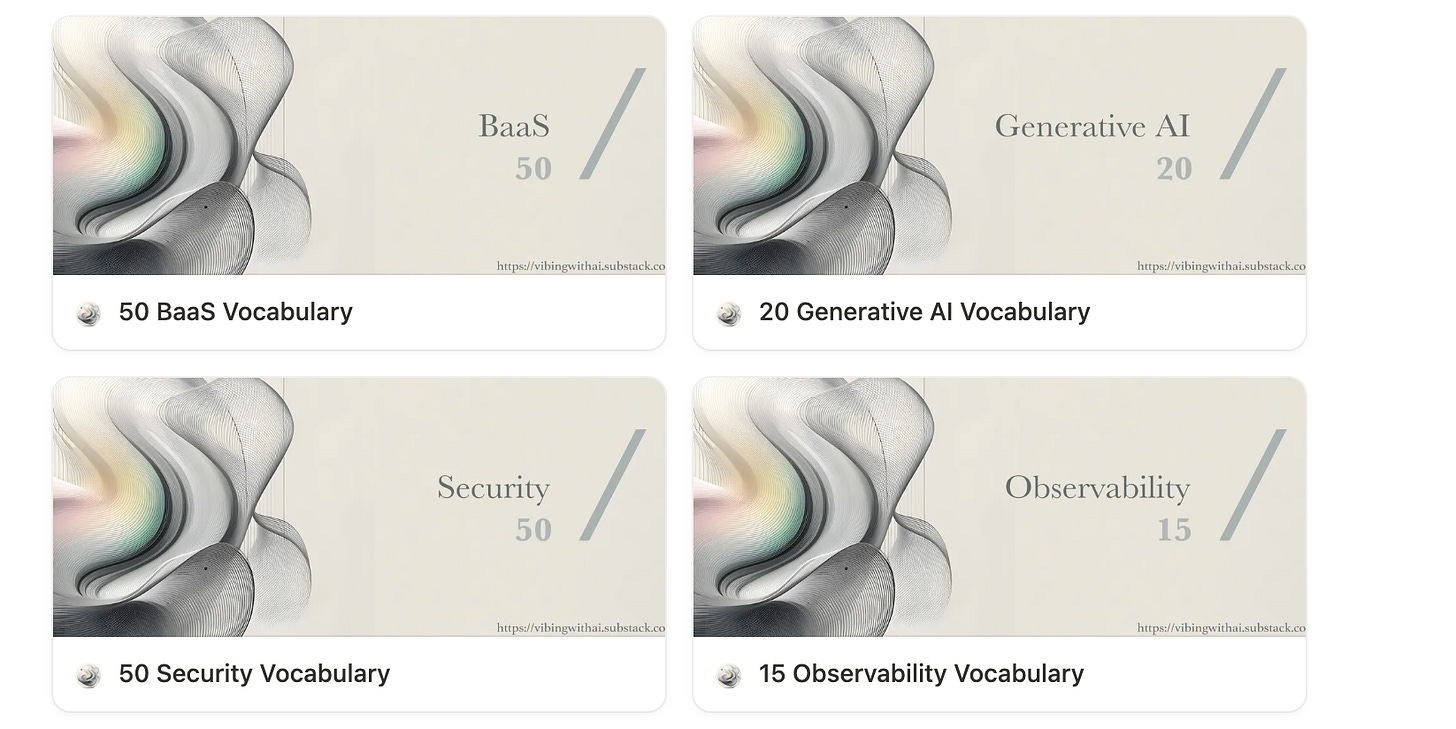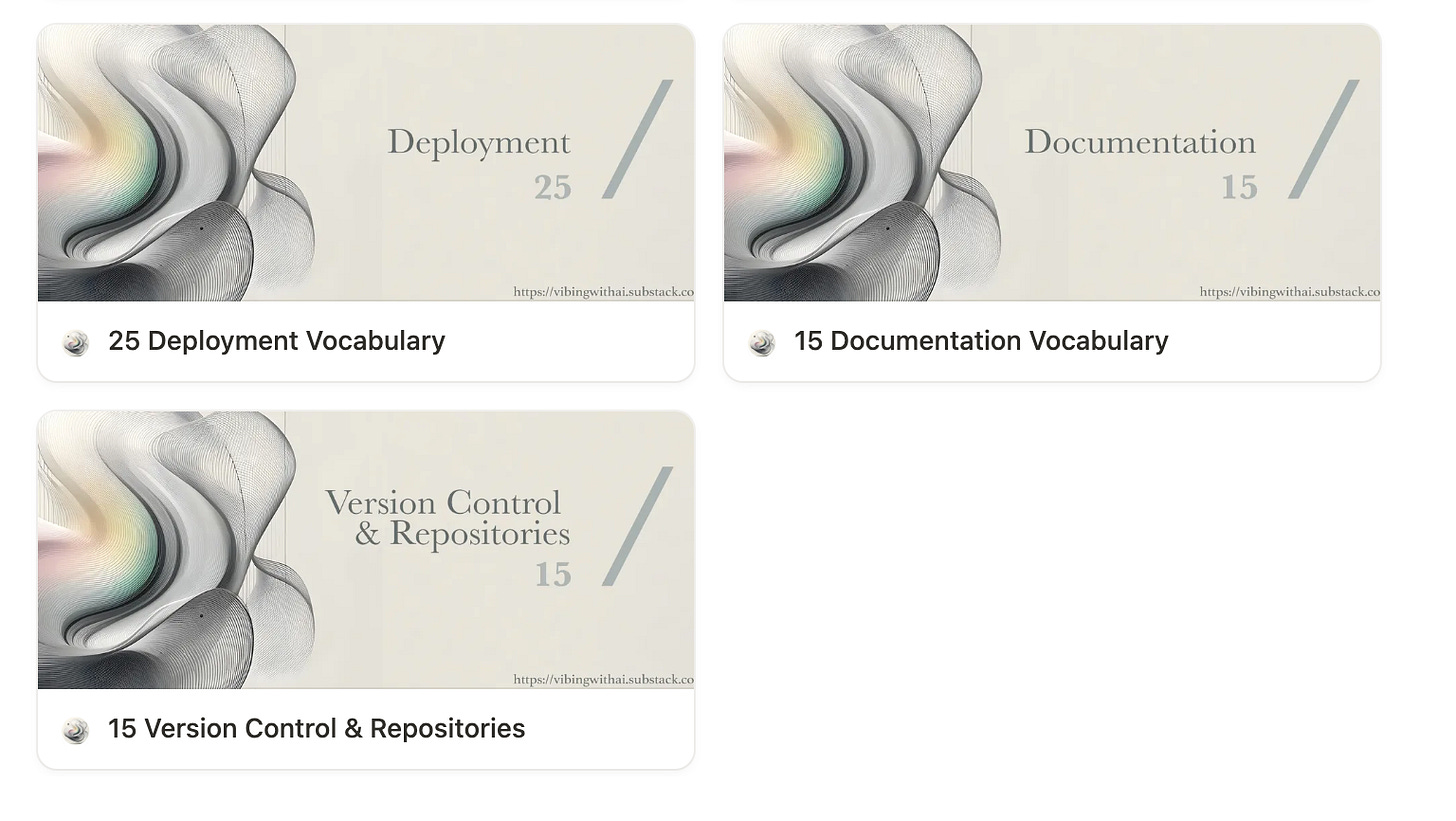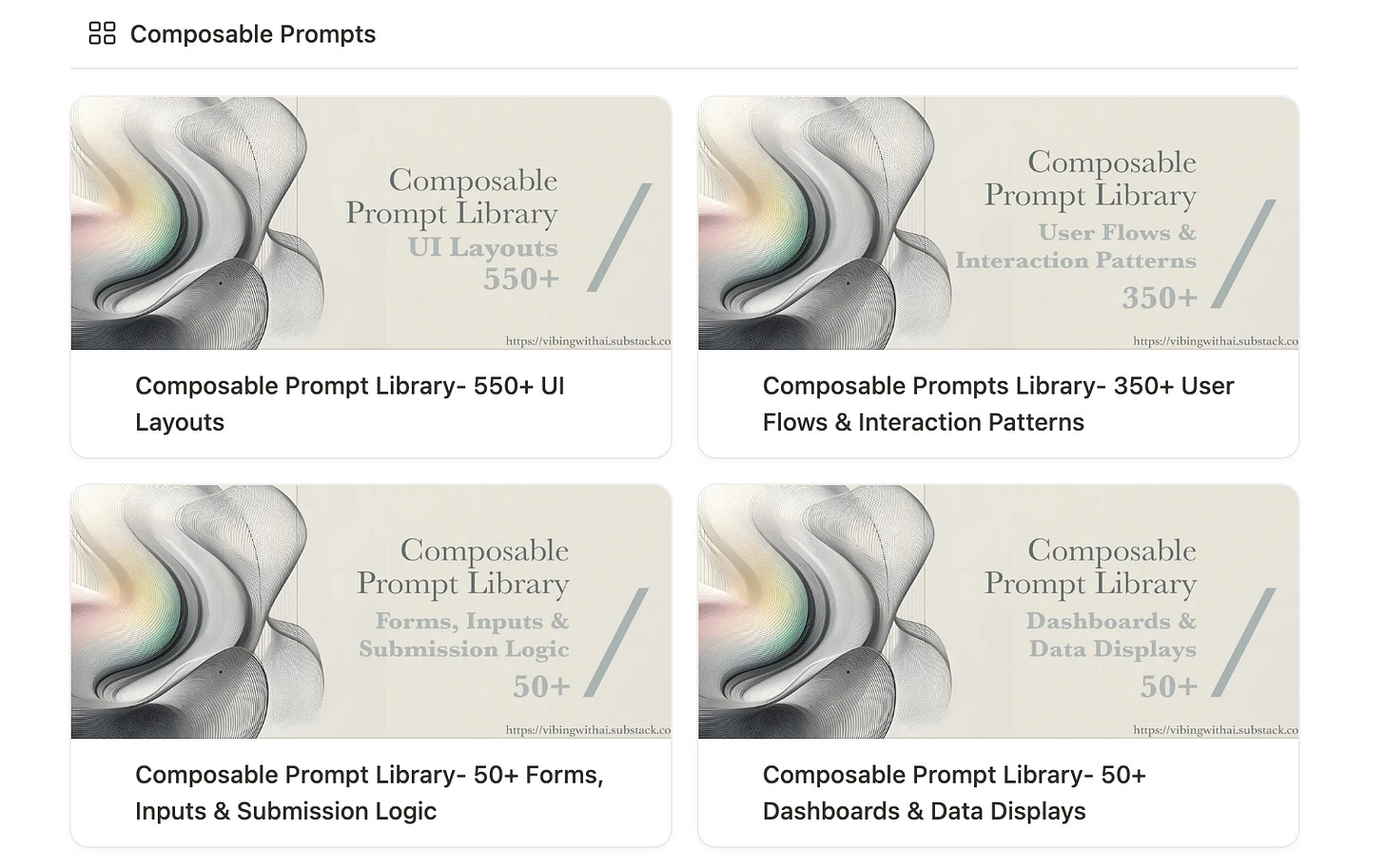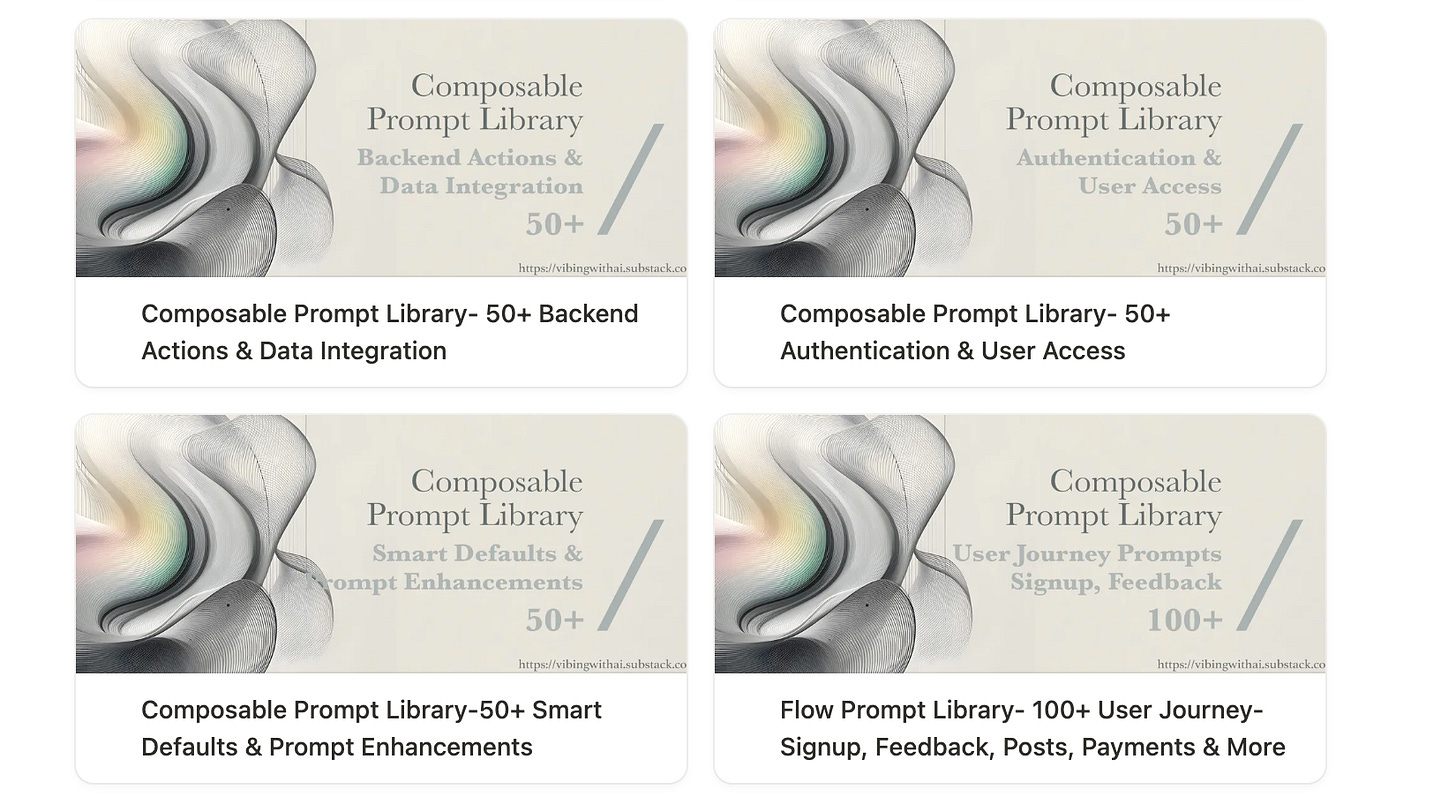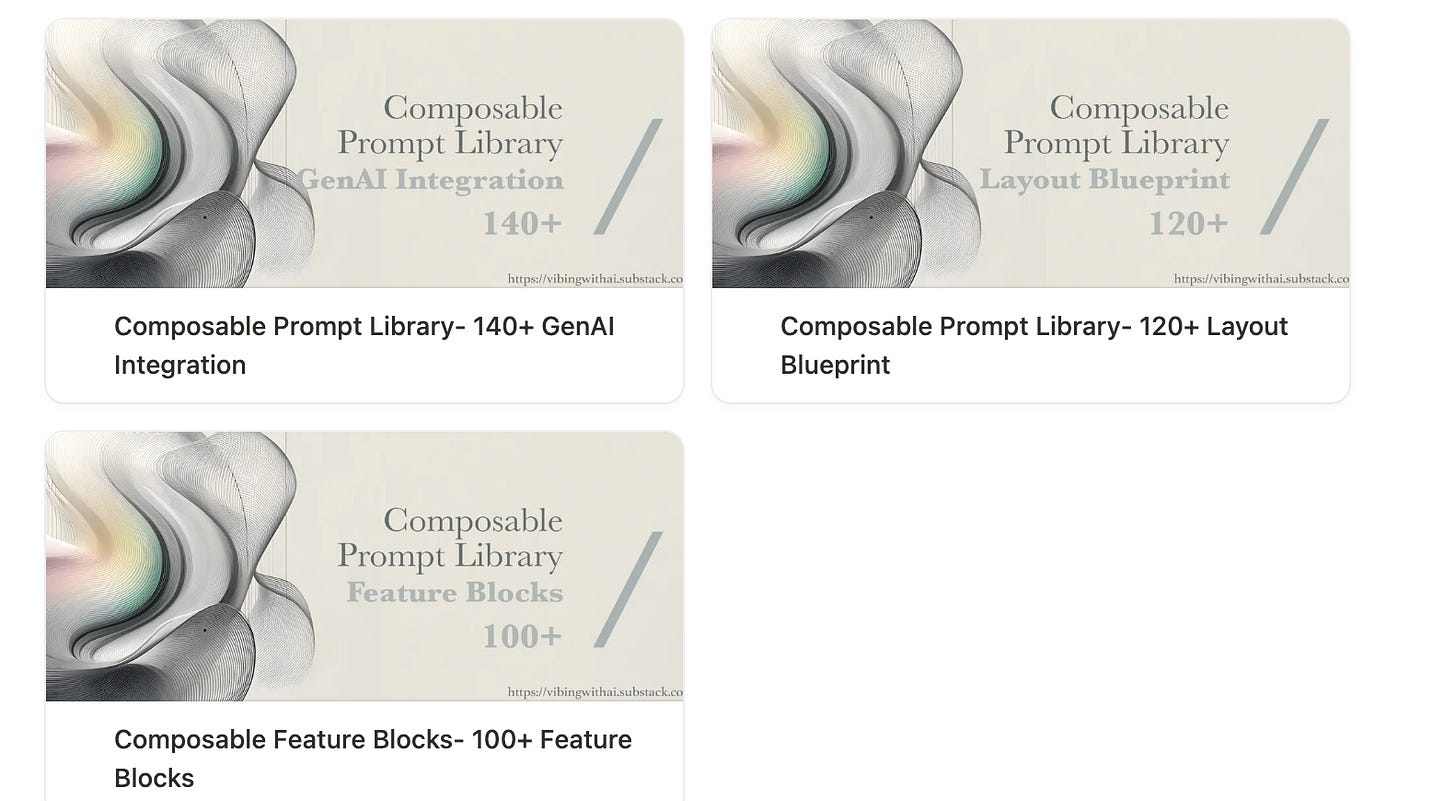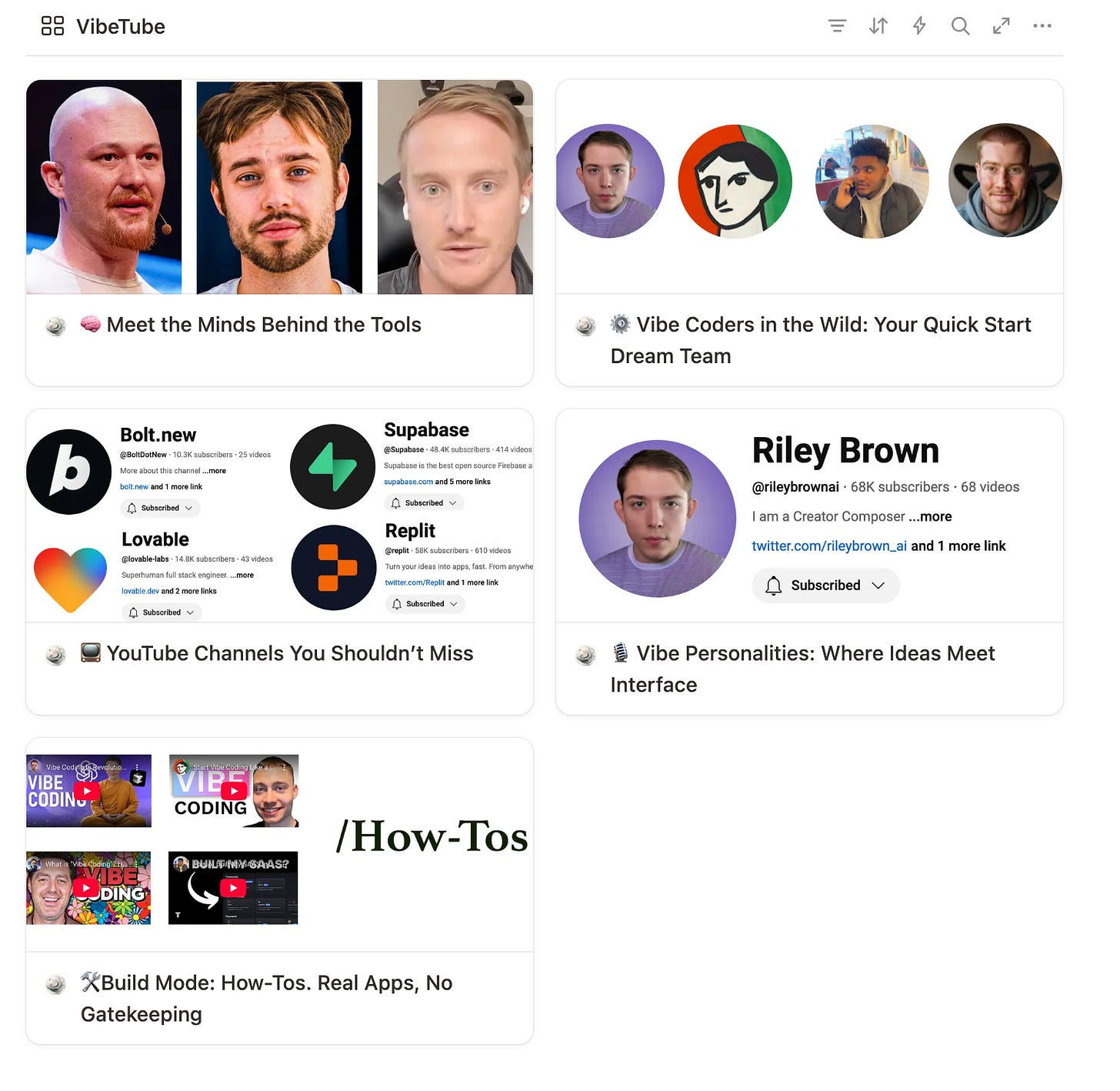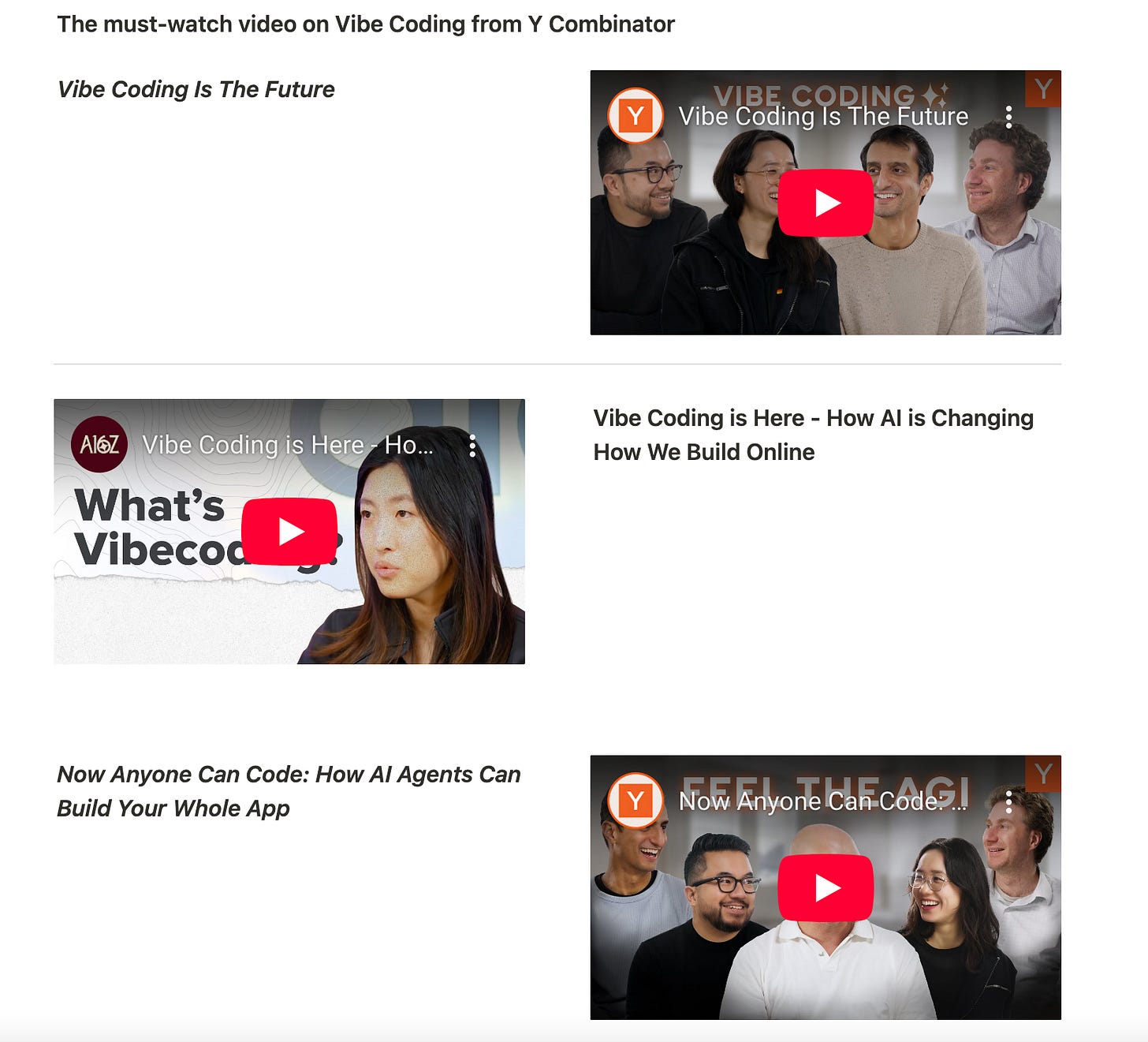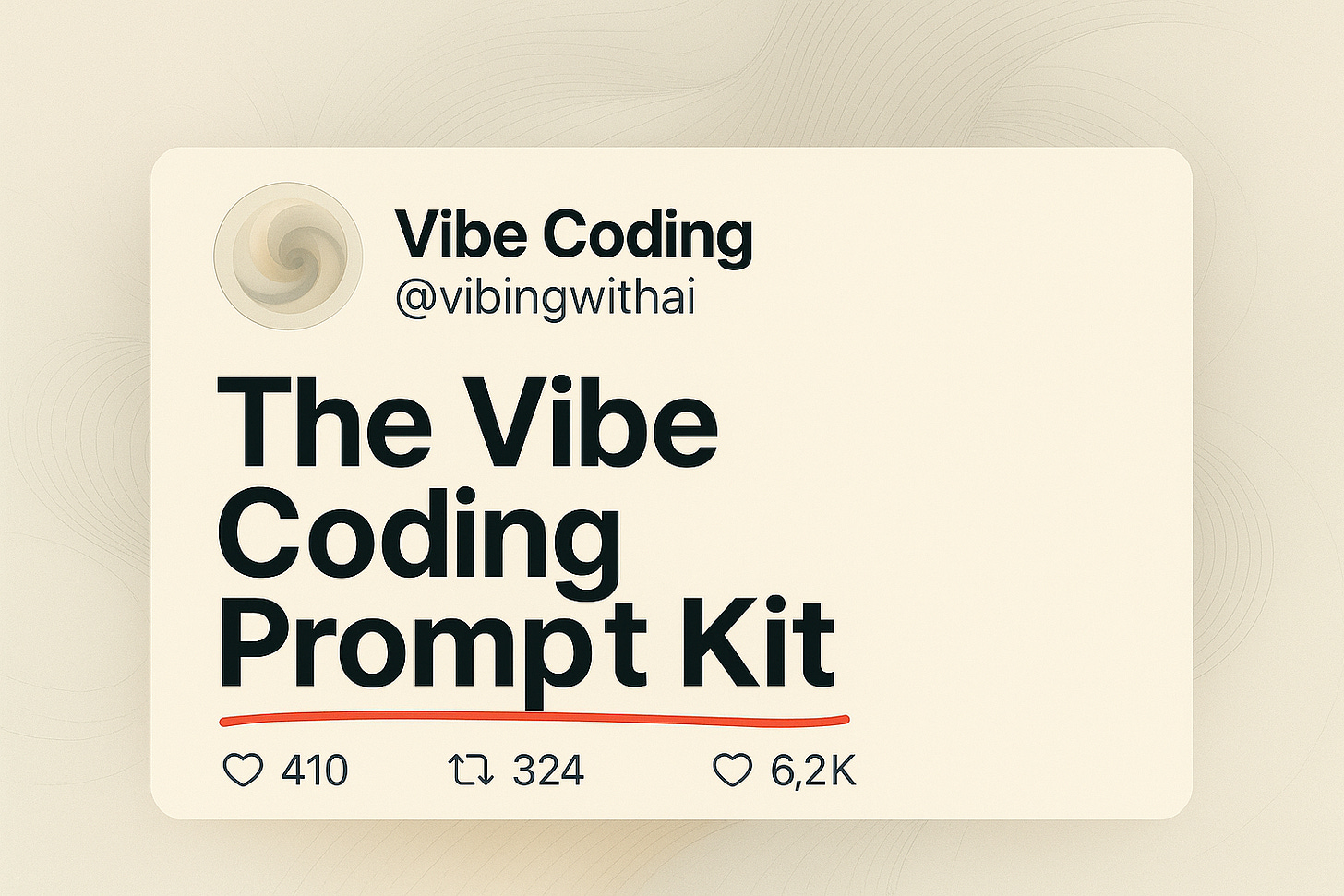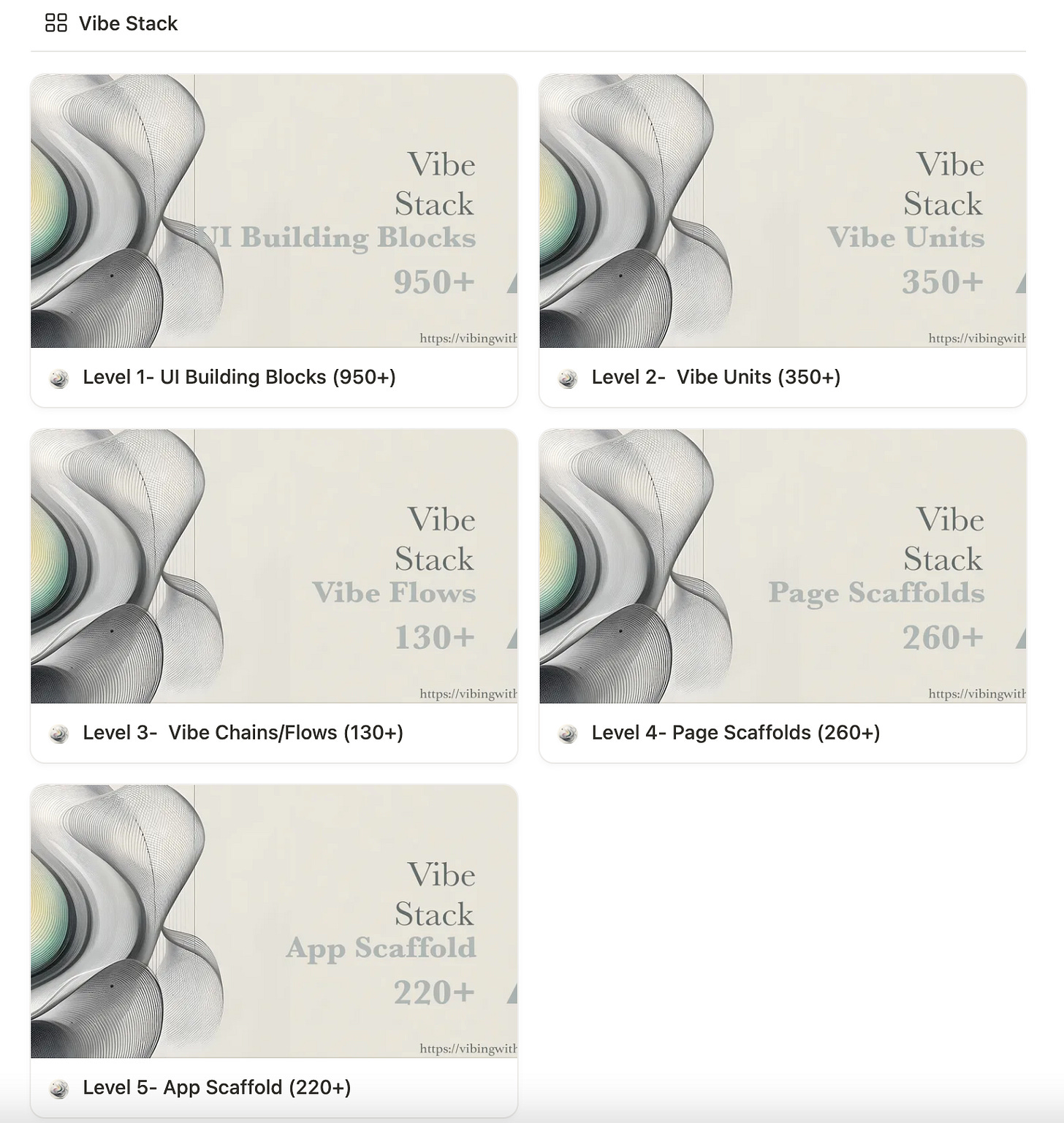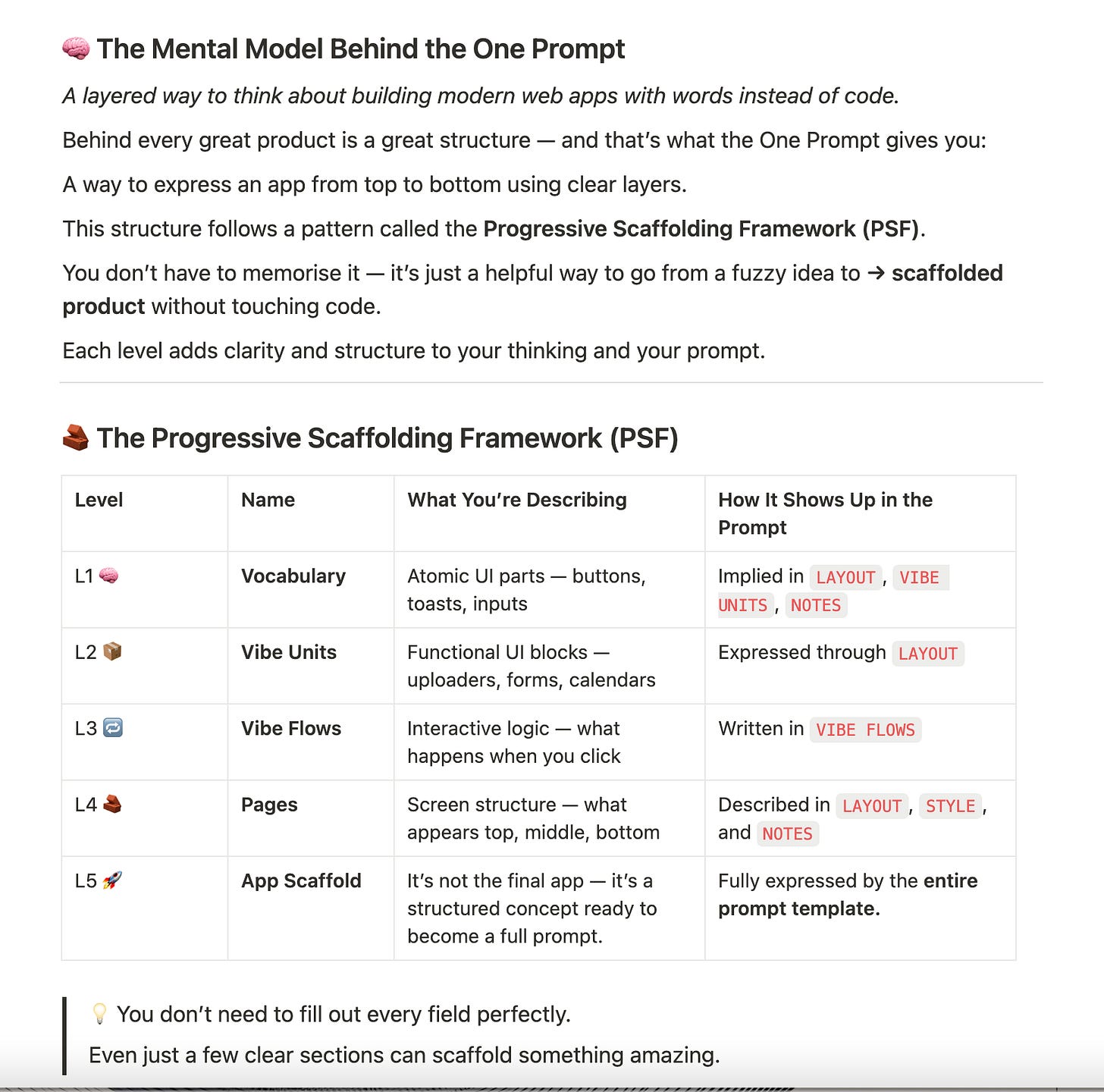The Vibe Coding Builder Kit: Your Resource Vault to Start Building With AI as a Non-techie
Learn the lingo of modern software to speak Dev and think like one, so you get to ask smarter. Build faster—with your private AI workspace.
Building with AI for someone with no technical background today feels like standing in front of a dozen glowing dashboards — each promising a shortcut to “real software” just to produce barely wired software with error loops.
Every week, a new CodeGen platform or AI-assisted coding tool claims to be the best, and the AI influencer camp booms with overwhelming noise that fills the already crowded filter bubble about the latest AI features.
But if you look closely, the underlying LLMs powering them are the same handful of models that keep swapping positions on the SWE-Bench leaderboard.
For a non-technical person venturing into the world of building with AI, it can be overwhelming.
The features on these platforms change so rapidly that even traditionally trained developers struggle to keep up. Trust me, I know.
That’s why I recommend starting with the fundamentals for non-techies.
No, not coding syntax or memorizing functions — but learning what actually transfers across platforms and tools: fluency.
Fluency in how modern software is structured.
Fluency in describing the product you’ve envisioned — clearly, in developer language, so the AI can generate what you imagined perfectly despite its non-deterministic nature.
It’s about learning to speak like a developer and think like one, in scaffolds.
That’s where the Vibe Coding Builder Kit comes in.
It’s your resource vault to learn the lingo, grasp the scaffolds that make up modern software, and start building with clarity — without writing a line of code.
It’s a pair of well-structured Notion templates designed for non-techies who want to create real software — from personal “software-for-one” builds to back-office solutions and workflow streamliners — but don’t yet know where to start, overwhelmed by the stream of AI-powered platforms and tools all promising a fully functional website or app in just minutes, but end up delivering half-wired products with error loops to deal with.
For a non-techie, it is a stopgap from the frustration that awaits those who do not speak Dev and think like one from the outset.
The Vibe Coding Builder Kit is not a course.
The Vibe Coding Builder Kit is not a tutorial.
It is a resource full of the fundamentals to speak Dev and think like one, in scaffolds.
🔓 Included with Full Access
You get two complete Notion templates built to work together:
The Vibe Coding Starter Kit
Your Creative Operating System for Prompt-Based Thinking
This kit is where beginners become fluent in the building blocks of modern web apps. It is a vocabulary engine, a design library, and a visual language toolkit for writing prompts that make sense to both you and the AI.
The Insight Layer
The Origin of Vibe Coding
An introductory module explaining how Vibe Coding emerged as a creative response to the complexity of software tooling.What is Vibe Coding?
A plain-English explainer using simple metaphors and high-context examples.The Beginner’s Library on Vibe Coding (150 insights)
Hand-picked insights from top thinkers in prompting, UI design, software philosophy, AI tools, language modeling, and low-code thinking. Includes original annotations.Vibe Coding Explainers
Visual explainers and concept diagrams that walk you through how AI interprets your words, how to break down ideas, and how to think in prompt-first structures.
The Modern Web Vocabulary (1,450+ Terms)
Grouped into clear, remixable vocab packs
Frontend Vocabulary (1,000 terms)
Layout components, sectioning patterns, navigation models, interactive UI terms, motion and animation concepts, UI microcopy patterns, display types, hero sections, cards, modals, tooltips, grid systems, form structures, spacing, hierarchy, and visual anatomy.Backend Vocabulary (100 terms)
API endpoints, CRUD operations, middleware concepts, token management, role-based access, RESTful design patterns, webhook triggers, server-side routing, data transformation, and business logic vocabulary.Database Vocabulary (40 terms)
Tables, schemas, primary and foreign keys, indexing, data types, relations, joins, normalization, migrations, constraints, and storage logic.
Authentication and Identity Vocabulary (50 terms)
OAuth flows, passwordless login, session handling, JWT tokens, signup/login flows, two-factor authentication, user role permissions, access gating, social login patterns, and token refresh logic.Payments Vocabulary (30 terms)
Checkout flows, payment confirmation, invoice generation, subscription plans, Stripe webhooks, trial periods, discount codes, paywall language, and failed payment notifications.APIs and Webhooks Vocabulary (50 terms)
API keys, endpoints, POST/GET/DELETE/PUT requests, headers, payload formatting, webhook listeners, retry logic, event-based triggers, and third-party integration vocabulary.BaaS Vocabulary (50 terms)
Supabase auth, Firebase Firestore terms, real-time data subscriptions, authentication providers, database rules, file storage handling, backend-as-a-service logic, and configuration terms.Generative AI Vocabulary (20 terms)
Prompt injection, temperature tuning, few-shot examples, embedding vectors, token limits, RAG (retrieval-augmented generation), text completion, chat memory, and streaming output.Security Vocabulary (50 terms)
Rate limiting, input validation, encryption, data sanitization, CORS, token expiration, secure headers, brute-force protection, cross-site scripting prevention, and access control logic.Observability Vocabulary (15 terms)
Logging levels, metrics dashboards, performance tracing, error boundaries, uptime monitoring, log formatting, and debug reporting.
Deployment Vocabulary (25 terms)
CI/CD, staging environments, deployment hooks, server regions, rollback handling, domain linking, environment variables, production configs, and hot reload.Documentation Vocabulary (15 terms)
API reference structure, code comments, endpoint descriptions, usage guides, change logs, onboarding documents, and README.Version Control and Repositories (15 terms)
Branch naming, pull request templates, commit message structure, tagging, version bumping, changelog practices, merge conflicts, and release workflows.
The Composable Prompt Library (1,500+ Prompts)
Every prompt organized by functional purpose and UI zone
Interface Structure
550+ UI Layout Prompts
Hero sections, grid layouts, dashboard structures, landing sections, sidebars, content areas, and footers350+ User Flow and Interaction Prompts
Step-by-step interactions, wizards, conditional paths, multi-part forms, modals, and action triggers50+ Forms, Inputs, and Submission Logic
Signup forms, search inputs, filter sliders, data submission confirmations, validation patterns50+ Dashboards and Data Displays
Admin views, analytics panels, user-facing summaries, data tables, charts
Logic and Functionality
50+ Backend Actions and Data Integration
Data syncing, Supabase queries, Firebase Firestore logic, webhook interactions, and CRUD actions50+ Authentication and User Access Prompts
Login, signup, password reset, gated content, token management, access logic50+ Smart Defaults and Prompt Enhancements
Autofill fields, AI-enhanced copy, placeholder logic, first-time user states, smart UI tips100+ User Journey Prompts
Signup flows, feedback systems, post creation, payment confirmations, notification opt-ins
GenAI, Layout Strategy, and Modular Composition
140+ GenAI Integration Prompts
Chat inputs, prompt shaping, image generation, RAG models, audio-to-text, classification tools120+ Layout Blueprint Prompts
Page scaffolds, visual hierarchy structures, content stacking orders, consistent preview logic100+ Feature Blocks
Toggle filters, share buttons, notification badges, view switchers, call-to-action sequences
VibeTube
Meet the world behind the words. A curated audiovisual layer.
Meet the Minds Behind the Tools
Key founders and engineers from Bolt, Supabase, Replit, and Lovable.Vibe Coders in the Wild: Dream Team Profiles
Real creators using AI tools to build public-facing apps.YouTube Channels You Shouldn’t Miss
Bolt.new, Supabase, Lovable Labs, Replit, and more with full video collections.Vibe Personalities: Where Ideas Meet Interface
Channel spotlights like Riley Brown, who are pioneering prompt-first building.Build Mode: How-Tos Without Gatekeeping
Video tutorials with no fluff, just real builds from real people.
Vibe Coding Video Playlist
“Vibe Coding is the Future” (Y Combinator)
“How AI is Changing How We Build” (a16z)
“Now Anyone Can Code” (OpenAI demo)
“What’s Vibecoding?” (Substack conversations)
The Vibe Coding Prompt Kit
Your Pro-Level Prompt Engine for Scaffolded App Generation
This kit gives you the full grammar system to describe working software from top to bottom — using only structured language. No guesswork, no freeform writing. It’s where scaffolding becomes sentence-shaped.
Vibe Stack (1,950+ Prompt Units)
All modular prompt units are organized into 5 scaffold levels using the Progressive Scaffolding Framework (PSF):
Level 1 — UI Building Blocks (950 units)
Ten categories:
Forms and Inputs
Content Display
Layouts and Lists
Actions and Navigation
Overlays and Dialogs
User Authentication
E-commerce
Help and Support
Search and Filtering
Miscellaneous Components
Level 2 — Vibe Units (350 units)
Twelve categories:
Authentication and Profiles
Content Creation and Publishing
Forms and Input UX
Checkout and Pricing
Notifications and Feedback
Search and Filtering
Scheduling and Calendars
AI and GenAI Features
Dashboards and Analytics
Team and Collaboration Tools
Admin and Developer Utilities
Layout and UI Enhancers
Level 3 — Vibe Chains and Flows (130 units)
Ten categories:
User Onboarding
Publishing and Sharing
E-commerce Actions
Feedback and Reviews
Scheduling and Events
Support and Help
Dashboard Interactions
AI-Powered Flows
Profile and Settings
Engagement Loops
Level 4 — Page Scaffolds (260 units)
Twelve categories:
Marketing and Lead Generation Pages
User Profiles and Settings
Authentication and Onboarding Pages
E-commerce and Checkout Pages
Content Creation and Publishing Pages
Dashboards and Analytics Pages
Scheduling and Calendars Pages
Admin Tools and Permission Pages
Help and Support Pages
Community and Social Pages
Search and Discovery Pages
AI-Powered Tools Pages
Level 5 — App Scaffolds (220 units)
Seven categories:
Marketing and Lead Applications
Publishing and Knowledge Applications
Client and Service Applications
E-commerce and Merchandise Applications
Internal Tools and Admin Applications
Scheduling and Event Applications
AI-Infused Applications
Prompt Engine: The One Prompt to Build Them All
A complete 9-field natural language template to describe entire applications:
BIG IDEA
Purpose: Describe the core concept of your product and the meaningful outcome it unlocks for a specific kind of user.
Prompt Pack: 120+ positioning and product identity starters written like pitches to a friend.
Use these prompts to clarify the “what” and “why” of your product in a natural, compelling tone.
CORE BRIEF
Purpose: Define your audience, the problem they face, and the transformation your app provides.
Prompt Pack: 100+ narrative scaffolds using the “Target → Pain → Outcome” pattern.
These help sharpen your product story, ensuring clarity in how the app creates value.
LAYOUT
Purpose: Outline what appears on each part of the screen — top, middle, and bottom — as if sketching the interface with words.
Prompt Pack: 550+ layout zone snippets, including landing page structures, dashboard grids, content sections, and responsive page templates.
These are used to compose the structural backbone of your app interface.
VIBE FLOWS
Purpose: Describe what the user does, how the system responds, and what feedback is shown — all in one sentence.
Prompt Pack: 350+ click-action logic chains for forms, toggles, uploads, publishing, filtering, search, onboarding, and more.
These flows scaffold the interactivity and logic behaviors behind every screen.
STYLE
Purpose: Set the mood of your app — its visual personality and feel.
Prompt Pack: 100+ distinct design styles, including brutalist, minimal, editorial, playful, glassy, friendly, and clean dashboard vibes.
Use these to guide the AI’s aesthetic decisions without needing to specify colors or components.
NOTES (This is part of the STYLE field)Purpose: Add any layout behaviors, mobile rules, spacing logic, or accessibility preferences. Prompt Pack: 100+ notes on UX patterns like mobile-first structure, keyboard shortcuts, dark mode defaults, ARIA labels, and sticky elements.These help guide responsiveness, usability, and polish.
DATA • STORAGE
Purpose: Define what data your app stores, where it lives, and whether it’s local or external.
Prompt Pack: 120+ prompt templates covering Supabase, Firebase, Airtable, local storage, Neon, and Google Sheets.
Use these to make your app persist user input, profile data, content, analytics, or submissions.
DATA • SERVICES
Purpose: List third-party tools or APIs your app connects to — like Stripe, Resend, Notion, or Zapier.
Prompt Pack: 100+ prompt templates for payment, email, content APIs, automation, calendar, and file handling services.
These power up your app by describing what happens beyond the frontend.
OPTIONAL • AI
Purpose: Add smart helpers like summarizing, rewriting, tagging, classifying, or generating content.
Prompt Pack: 140+ composable AI features for LLM-based flows, from chat logic and content suggestions to audio and image generation.
These let you embed lightweight GenAI behavior throughout the app.
FINISH UP
Purpose: Define how the final scaffold should be structured — modular, labeled, and exportable.
Prompt Pack: 70+ finishing commands to tell the AI how to deliver output, including instructions for flow labeling, code hygiene, and modularity.
These wrap the build with structure, clarity, and dev-friendly formatting.
Also includes:
The full Progressive Scaffolding Framework table
A mental model for prompt clarity
Usage guidance for chaining and remixing
Scaffold-aware prompt samples and debug tips
Unlock the Vault
You’ll get:
Notion access to both kits
Lifetime updates
Prompt manuals and vocab walkthroughs
Starter prompt recipes
Full access to visual layouts, videos, and guides
→ Unlock full access for free by becoming a paid subscriber
or
Buy the Vibe Coding Builder Kit for $38
✅ Includes the full Prompt Kit
✅ Comes with the Starter Kit Pro Edition ($18 value) — yours at no extra cost



